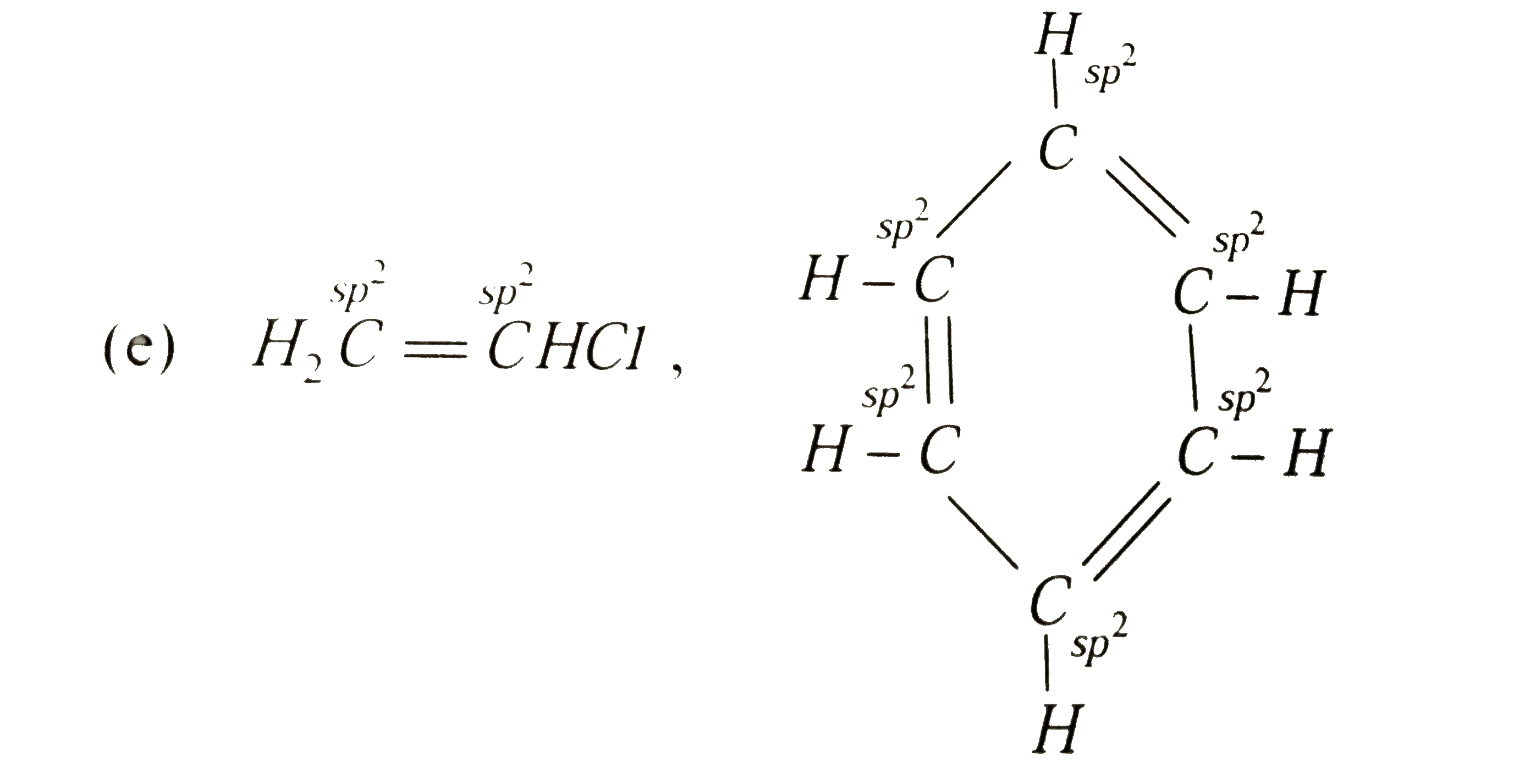Consider the following compounds
A. Chloroethene B. Benzene
C. 1,3-butadiene D. 1,3,5-hexatriene
All the carbon atoms are sp2 hybridised in
A
A, C, D only
B
A, B only
C
B, C, D only
D
A, B, C and D
Video Solution
Text Solution
The correct Answer is:D

H2sp2C=sp2CH−sp2CH=sp2CH2
sp2CH2=sp2CH−sp2CH=sp2CH−sp2CH=sp2CH2
|
Updated on:21/07/2023
Topper's Solved these Questions
- BOOK - ERRORLESS CHAPTER - GENERAL ORGANIC CHEMISTRYEXERCISE - Dipole moment, resonance and reaction intermediates73videos
GENERAL ORGANIC CHEMISTRY
- BOOK - ERRORLESS CHAPTER - GENERAL ORGANIC CHEMISTRYEXERCISE - Organic reactions and their mechanism67videos
GENERAL ORGANIC CHEMISTRY
- BOOK - ERRORLESS CHAPTER - GASEOUS STATE EXERCISE - JEE SECTION JEE (Advanced) 2018 Numeric answer type question1videos
GASEOUS STATE
- BOOK - ERRORLESS CHAPTER - HALOGEN CONTAINING COMPOUNDEXERCISE - Critical Thinking (Jee (Advanced) 2018)1videos
HALOGEN CONTAINING COMPOUND
Similar Questions
Knowledge Check
- Question 1 - Select One
All carbon atoms are sp2 hybridised in
ACH2=C=CH2B1, 3- butadieneCCH≡C−C≡CHDCyclohexane - Question 2 - Select One
Consider the following compounds
(i) Chloroethane (ii) Benzene (iii) 1,3-butadiene (iv) 1,3,5-hexatriene
All the carbon atoms are sp2 hybridized inA(i),(iii),(iv),onlyB(i),(ii), onlyC(ii),(iii),(iv),onlyD(iii),(iv),only - Question 3 - Select One
All carbon atoms are sp2-hybridised in:
AHC≡C−C≡CHBH2C=C=CH2C2-buteneD1,3-butadine

